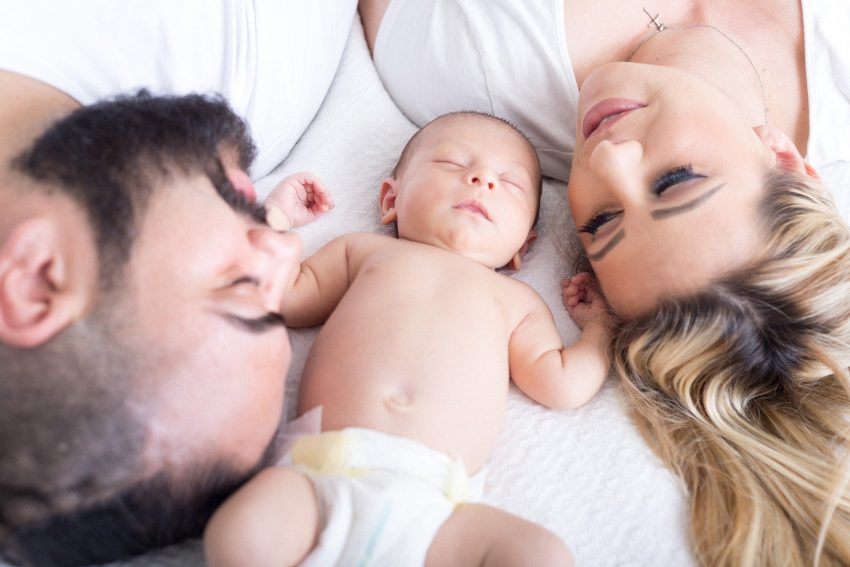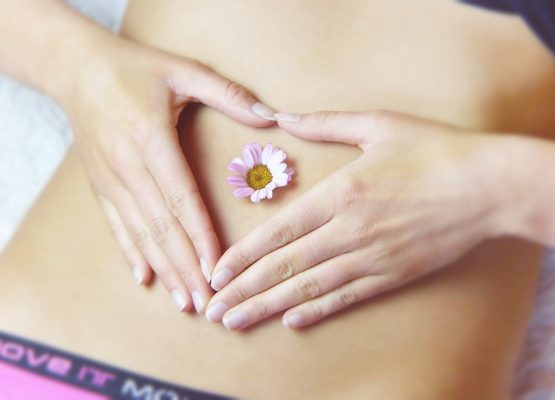The time you will give birth to your child has already arrived, but your tiny human feels warmth in your belly, he feels your pulse, he hears your voice, your heart, your daily life. He feels such warmth and comfort that he does not want to leave the wonderful home you have made for him. The probability of giving birth to your baby at the estimated delivery time – EDT is only 2-5%. Normally 40% of babies are born 2 weeks after the estimated delivery time. Now that you’re almost at the finish line, you may be thinking of ways to naturally induce labor or be tempted to schedule an induction. Your body will work when it is ready as you are not made to be pregnant forever, but some of these natural methods may be worth a try. So due to unnecessary interventions because of the medical induction that can pose unnecessary risks you just prepare to induce yourself in natural ways. So if you decide to induce your delivery naturally, you may find some of the following methods effective and others may not, as no method has a 100% success rate.
Why we induce labor?
The pregnancy going beyond the due date, preterm or pre-labor membrane rupture, and concerns about the health of the mother or baby such as preeclampsia or poor growth of the baby.
- Walking
It is important to exercise and walk throughout your pregnancy, but it has been shown that walking in recent weeks before delivery helps significantly in causing your labor. Gravity is your ally and with its help it puts the baby in your pelvis. The pressure exerted by your baby can soften and dilate the cervix as well as improve and contribute positively to the progress of the contractions. Also after the 36th week of pregnancy, you can do engagement exercises, with which also you can induced your body into labor.
- Sex intercourse
The “secret method” that brings the baby faster to the mother is the one that caused the pregnancy itself: we call it sex!
Sex is safe throughout pregnancy as it is a safe method of natural induce birth. The act of sex can cause contractions. During sex, two basic hormones are released that contribute to the onset of labor. The woman’s body releases oxytocin, one of the most important hormones for the onset of labor, birth, and stimulation of uterine receptors to cause contractions, while the man through his sperm releases prostaglandin, which helps the cervix and softens him by preparing him for childbirth. Sexual intercourse during the last days of pregnancy -after 38 weeks- without prophylaxis, is considered one of the natural ways to induce birth. Do NOT have sex if your water is already broken. This can cause you to be at risk for an infection. Of course, a prerequisite is that the pregnancy is at an end so that the prostaglandins can act and there is some degree of maturation of the cervix.
- Nipple Stimulation
Nipple irritation also releases oxytocin and can cause contractions and labor, which often occurs when a woman is pregnant and breastfeeding her older child while doing tandem. It’s also very useful for laboring women when contractions have slowed or stopped.
Try to extract milk out of your breast -yes this is possible- mimic the suckling of a baby so you will stimulate one breast for 5 minutes, then take a break for about 15 minutes to see if anything happens before you continue to the next breast. You could use also your breast pump. Using a breast pump can be more effective since it is going to be more vigorous than you or your partner, but some women find the pumping and the contractions to be a bit too painful too quickly. Nipple and uterine stimulation reduce the frequency of elective labor induction, the rate of relevant complications, and support normal vaginal birth by providing endogenous labor induction.
| Only massage and stimulate one breast at a time.Don’t stimulate the breast during a contraction.Start with your thumb and forefinger at the areola, and gently pull down over the nipple. This should cause the nipple to become erect.Do not use nipple stimulation after the contractions are 3 minutes apart or 1 minute long.If contractions start coming close together, take a break for 2- 4 minutes and let nature take its course.After you have waited another 2-4 minutes, repeat this process on your other nipple. You also don’t want it to be too gentle. Babies have a strong suckle when they are on the breast so you want to imitate that intensity |
- Acupuncture and Acupressure
Acupuncture has been used for more than two thousand years in China and Japan. Acupuncture involves the insertion of fine needles into specific points of the body while acupressure involves using the thumbs or fingers to apply pressure to specific points. Mothers to be should begin acupuncture or acupressure from around 34-36 weeks to help prepare them for birth. Research shows that acupuncture may begin labor within the next 6-48 hours. Both have been used to help open and dilate the cervix with the onset of labor contractions. The most common point in acupressure that believed it can induce labor is the large intestine 4 point (LI4), that it’s located on the back of the hand, deep between the webbing of your thumb and pointer finger.
- Raspberry leaves
The use of red raspberry leaves is not new in the medicines. They used to use them from the 6th century as a folk medicine to treat wounds, diarrhea, colic pain, and as a uterine relaxant. Raspberry prevents miscarriage and hemorrhage, decreases morning sickness, and reduces pain in labor by toning the muscles of the uterus. Specifically it helps strengthen the uterus and pelvic floor muscles to improve the effectiveness of contractions during labor. Overall, raspberry leaf tea was shown to facilitate more rhythmic contractions in uterine tissue but also showed conflicted toning and relaxing effects. You can get raspberry leaf tea at pretty much any grocery store. You can prepare it hot or make it iced so you can enjoy it year-round. You can drink red raspberry tea throughout pregnancy as follows: 3-4 tablespoons of red raspberry to one quart boiling water. Let steep for 2-4 hours. Strain and refrigerate —one cup per day in the first trimester, 2 cups per day in the second trimester, and 3 cups per day in the third trimester.
The natural induction approach in mums who are more physically and emotionally prepared and ready for the challenges of labor and babies who are ready to be born! Natural induction can help prevent the need for medical induction in many cases, and, for most, it feels preferable to avoid medical intervention where possible.
Holst, L., S. Haavik, et al. (2009). “Raspberry leaf – Should it be recommended to pregnant women?” Complementary Therapies in Clinical Practice 15(4): 204-208.
Effects of breast stimulation for spontaneous onset of labor on salivary oxytocin levels in low-risk pregnant women: A feasibility study, : Takahata K, Horiuchi S, Tadokoro Y, Shuo T, Sawano E, Shinohara K (2018)
The Effect of Uterine and Nipple Stimulation on Induction With Oxytocin and the Labor Process, Worldviews Evid Based Nurs, 2015 Oct;12(5):273-80. doi: 10.1111/wvn.12116.




